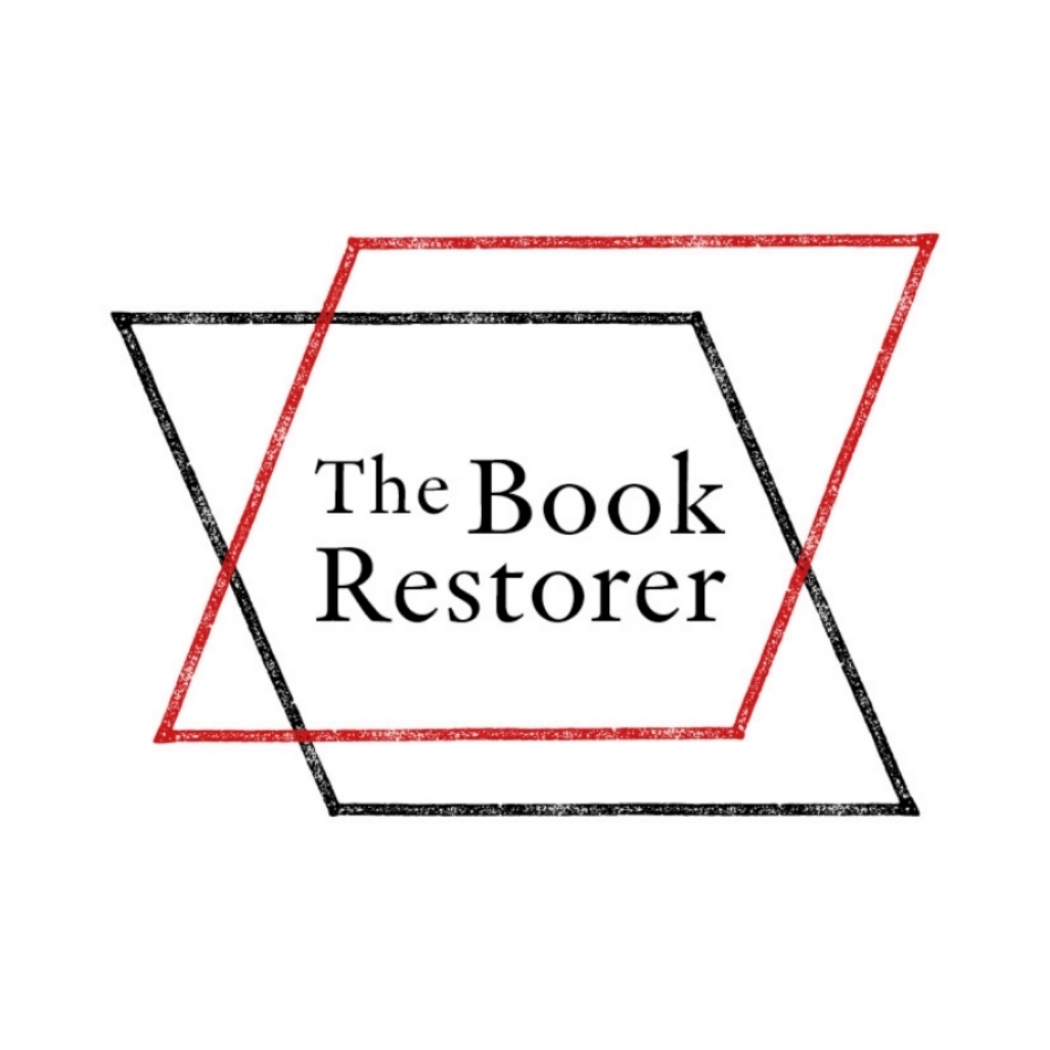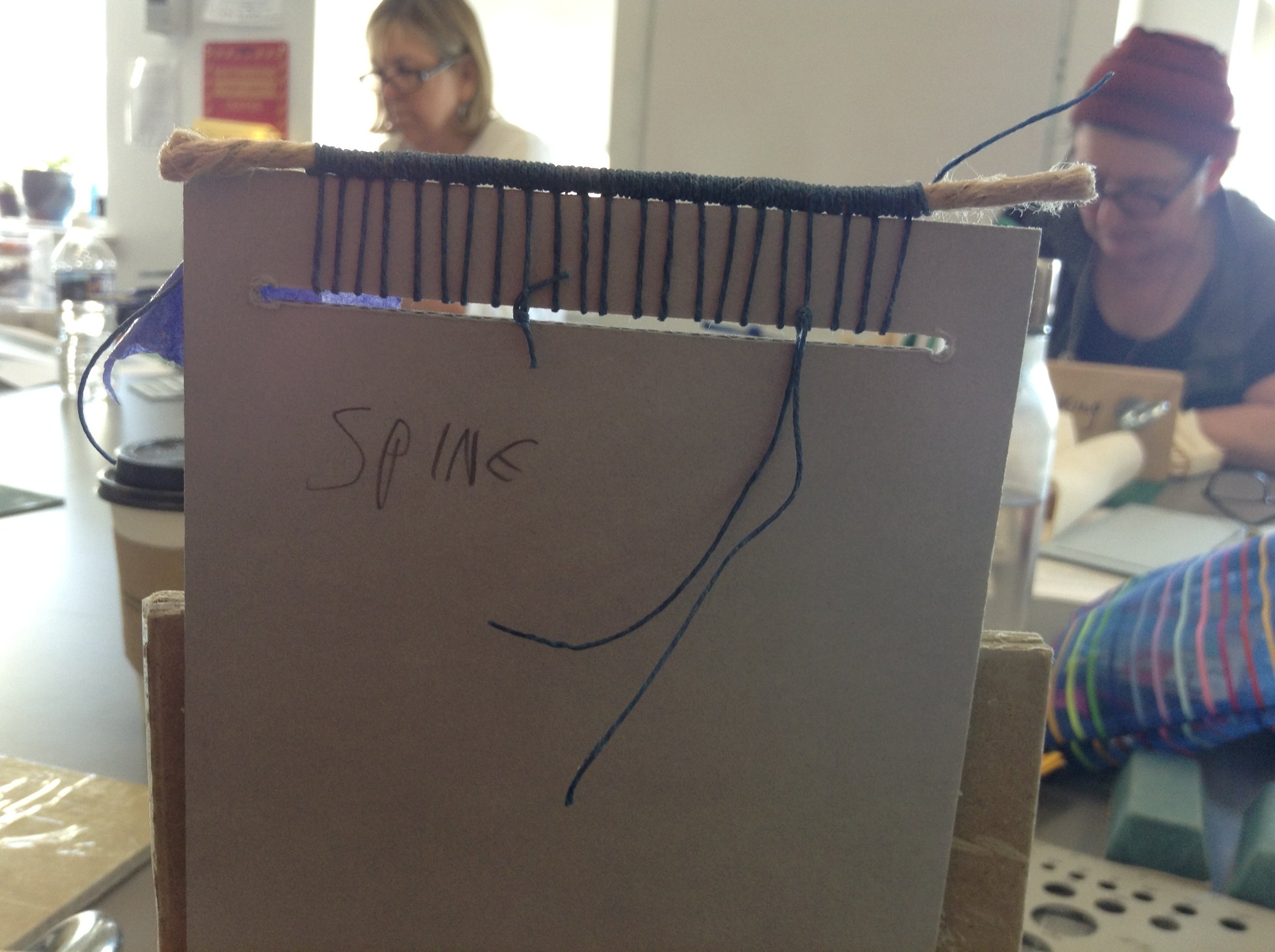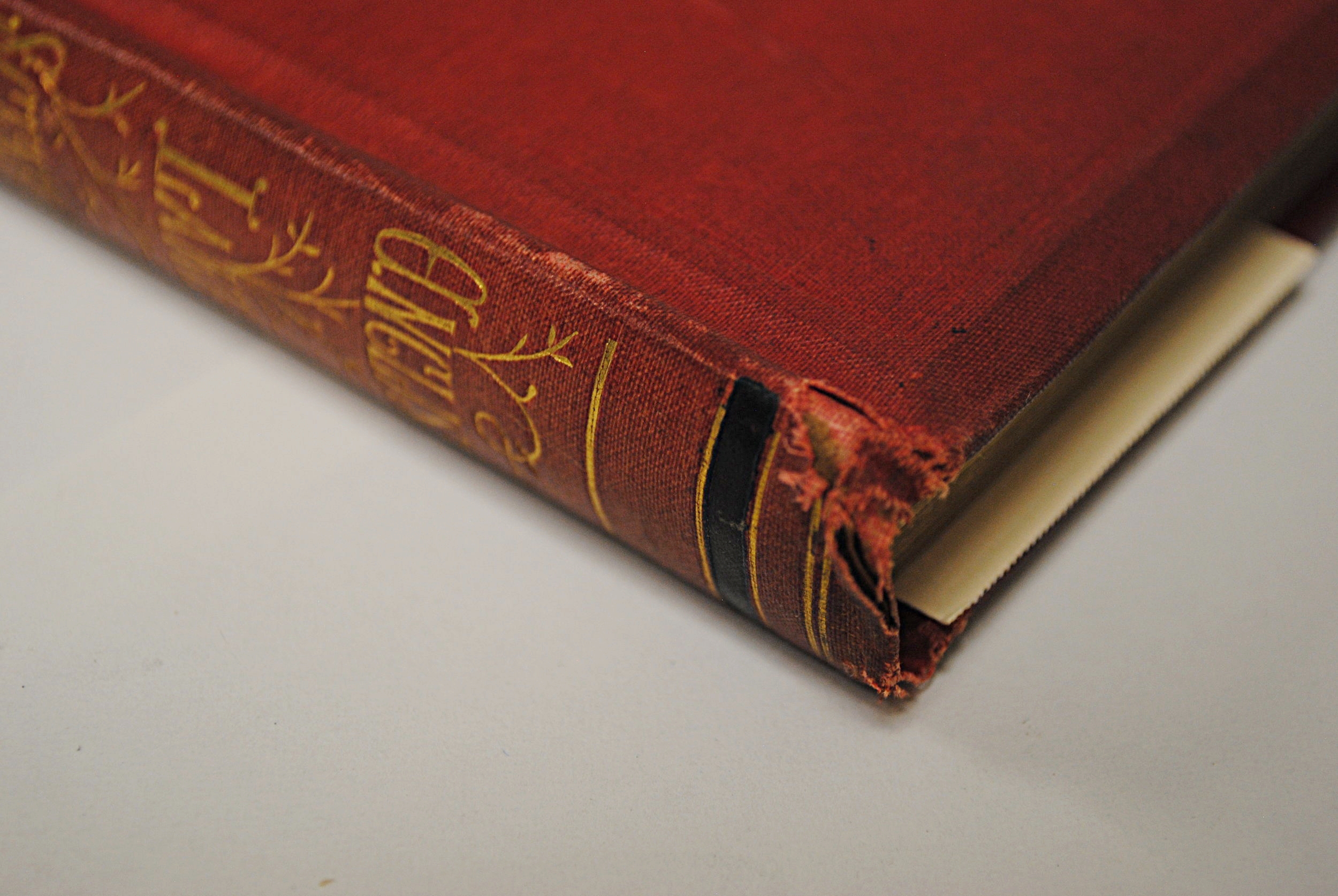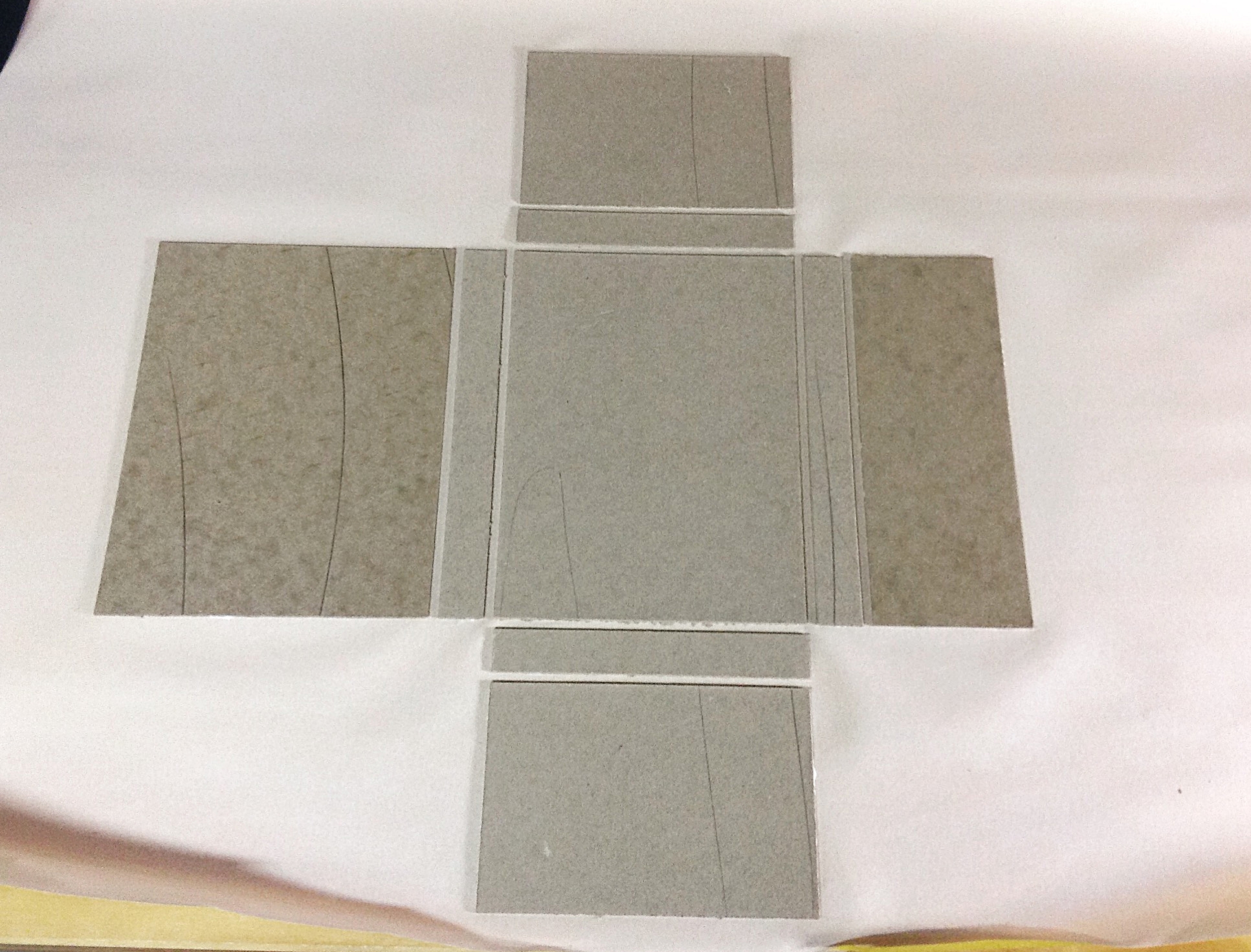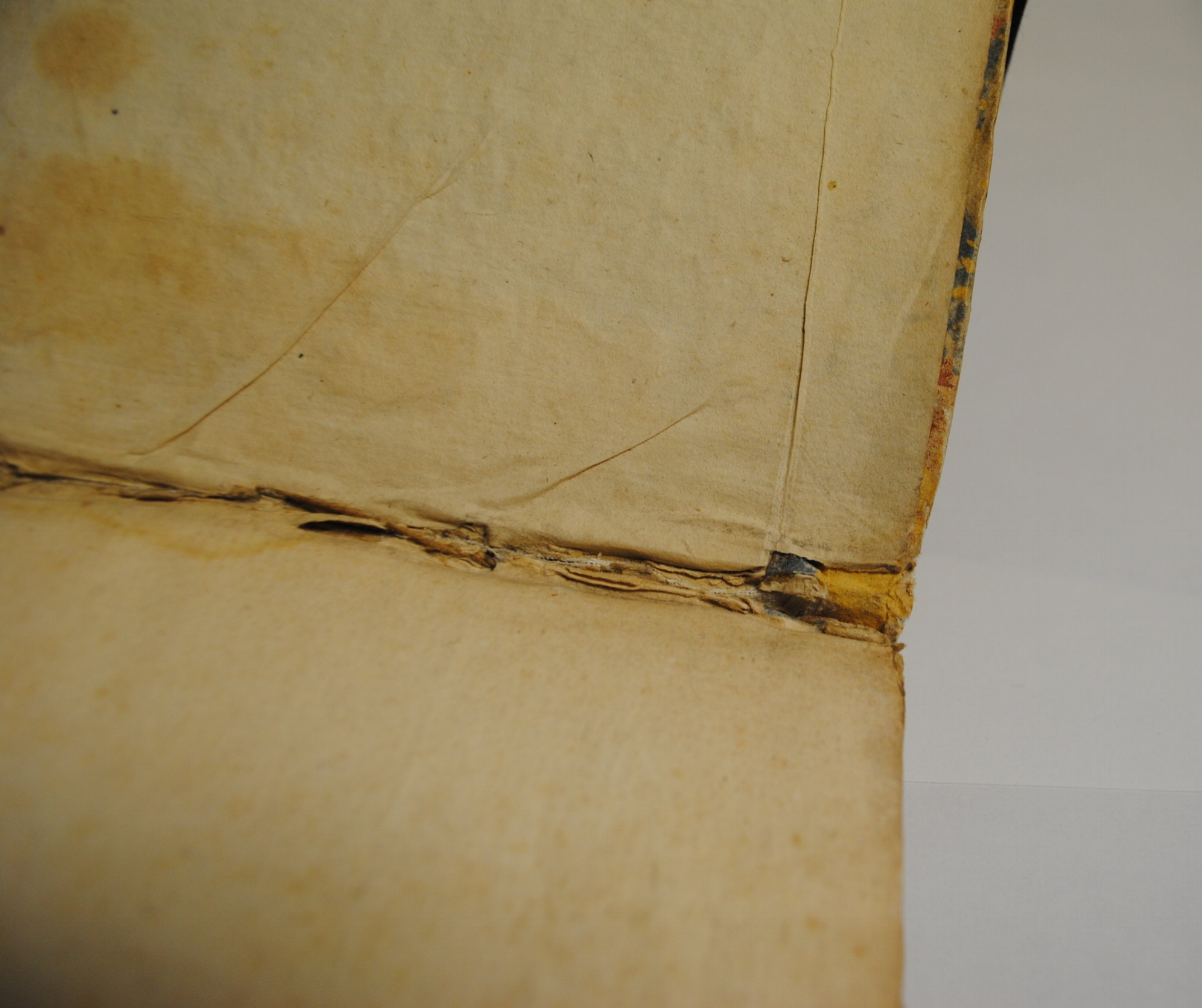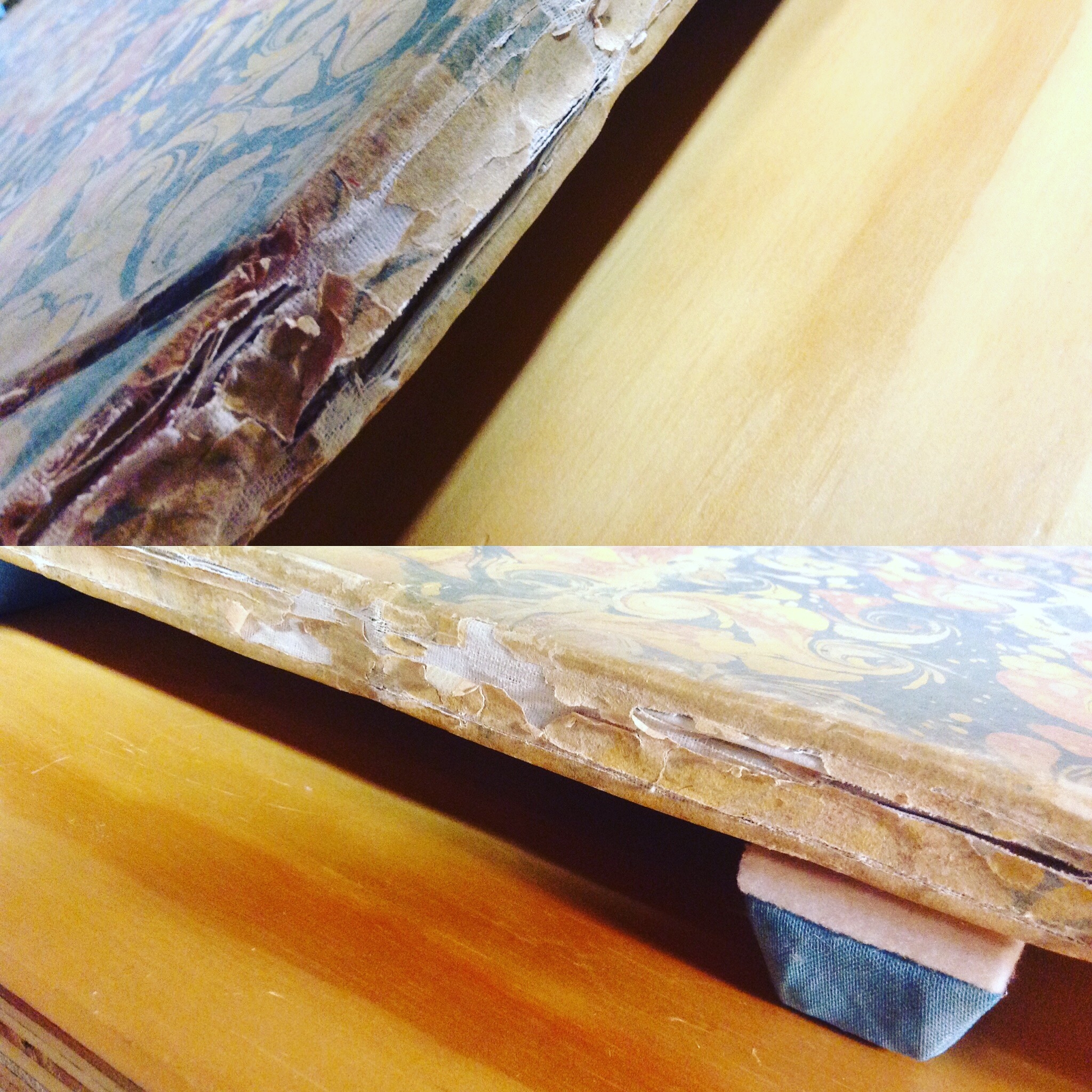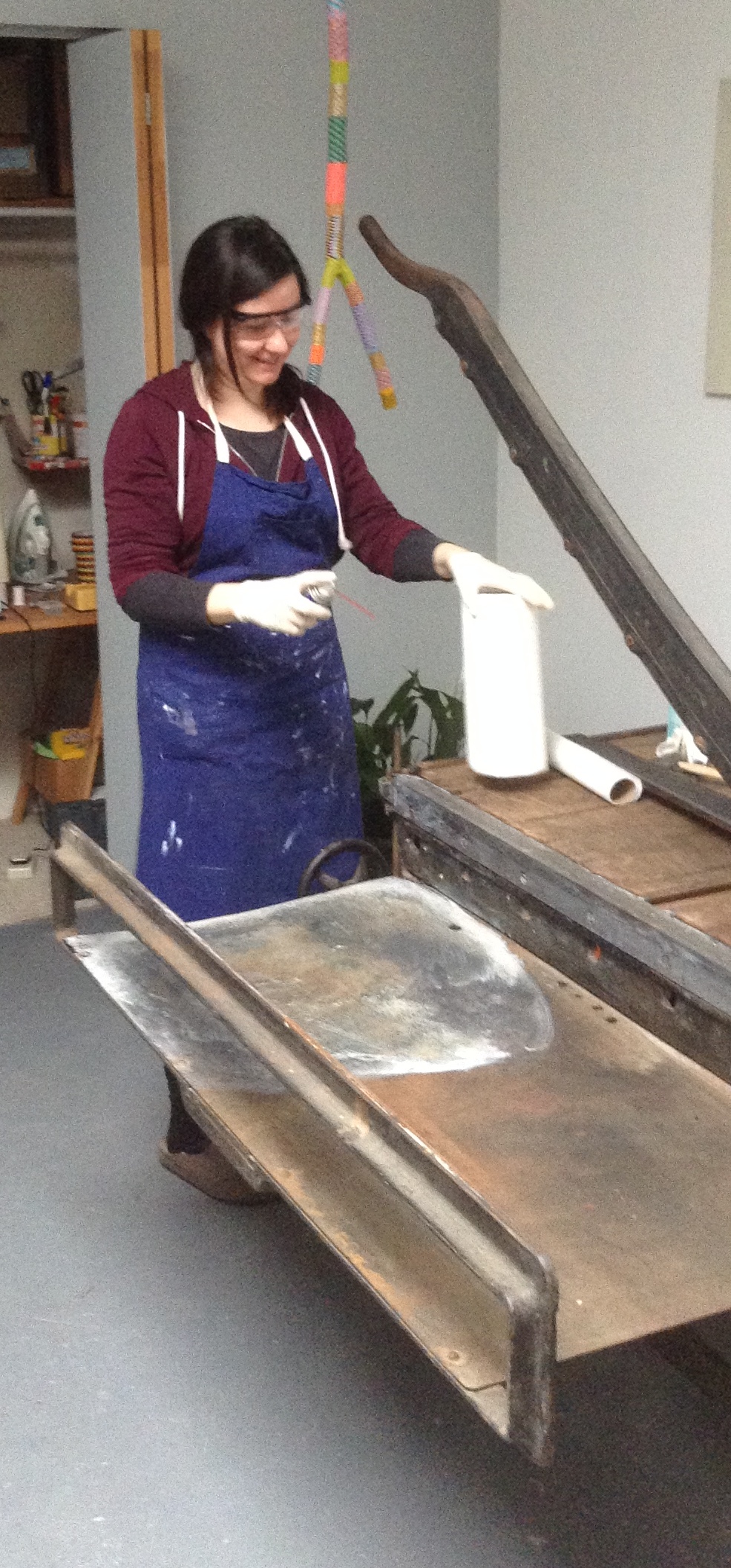Ruth Scott Blackson with contributions from Tara O’Brien
As soon as the tool making and gold finishing workshop taught by Brien Beidler was announced I jumped at the chance to take this class. I work freelance as a bookbinder and book restorer and although I do a great deal of hot stamping, making my own gold tools and using genuine gold leaf to tool a book does not come under my radar, (or to be more precise - I lack the knowledge/ experience, and tools). I follow Brien's Instagram page and am familiar with his work and tool - making prowess so was more than eager to take this class.
From the 'get go' it was apparent that this class was going to be an interesting one. As with all classes run by the Delaware Valley Chapter Guild of Book workers, (DVC) everybody goes around to introduce themselves. Name, background, interests etc., however Brien threw into the mix - 'What is your favorite sandwich?'. It sounds like a peculiar question/ way to introduce oneself but it instantly made everyone feel relaxed within the group - good call Brien!!!
Once introductions were out of the way Brien got down to business - the 2-day workshop would be split into two parts - day 1 involved making the tools and day 2 - doing the actual gold tooling with our tools with gold leaf onto leather.
Day 1 Making the Tools
Brien told the class that he first got into making tools when he met Jim Croft, (a Medieval bookbinder and papermaker who is well know for making tools). Meeting Jim 'blew his mind' said Brien - and was the inspiration to begin making his own tools. He has also received a lot of support from fellow toolmaker, Shanna Leino.
To begin everybody in the class needed to make wooden handles for their tools - this process involved drilling the dowel and then soaking it in water for a number of hours. The hole we all drilled (using hand drills) was slightly smaller than our piece of square stock brass that would go into the hole. The brass stock we used was 1/4" and cut to 3" in length. The next step was to shape the shank of our brass stock which involved holding the brass stock into the vice and using a coarse file tapering the piece of stock. This was a pretty physical process and many of us were fighting with our vices however the aim was to sand all four sides of the stock to obtain a gentle taper all the way down. Once this was achieved on the thicker end of the stock we were to shape and polish it so that the end resembled a perfect dome shape using various sandpaper grits. This dome shape is where the design goes.
Next - the fun bit where we got to figure out our designs. I decided to design a tool impression with a simple diamond and also a square shape with lines going horizontal and vertical. Workshop participants came up with some really beautiful but simple designs using a range of tools to get the desired effect. Some would use sanding and filing, while with more linear designs a jewelers saw was required. Meanwhile if a design was to be circular then a hole punch and hand drill was used to achieve the shape.
For the final part of day 1 Brien demonstrated making egg glair, which is used as an adhesive for gilding - day 2 would involve gilding the leather with gold leaf with the tools we made. I had come across synthetic glair but had never attempted to make this myself. To make the glair Brien used 1 egg white, and then half a shell for the rest of the measurements. This included 1 x 1/2 shell of white vinegar/ 1x 1/2 shell of water, and a few drops of milk or half and half- the protein in the milk helps the glair not to froth. Next - vigorously whisk the mixture, strain through a window mesh, and let sit overnight. I asked Brien how long the glair lasts (expecting him to say - a few weeks), however he mentioned that he has some in his fridge that he made in September and it is still good. He mentioned that the acidic vinegar acts as a preservative. Brien much prefers this process over using the synthetic glair, for one it is cheaper, and he likes to stay true to the historic hand-made process. I was definitely persuaded to use this method in the future.
Day 2
After the previous day of tool making – the group was raring to go for the next part of this workshop – the GOLD. For the trade-style gold tooling Brien supplies us with gold leaf, cotton balls, paste wash, glair (that he made the previous day), Vaseline, gold rubber, lighter fluid, and water. We also needed a gilding pad, gilding knife, heating element, finishing tools, (that we made on day 1), and a cotton pad.
Brien was really great at demonstrating all the steps for this tooling technique – there were many but below is his abbreviated version:
1. Apply paste wash to leather
2. Apply egg glair to leather
3. Apply egg glair to leather again
4. Thin layer of grease (like Vaseline)
5. Lay down gold
6. Tool
7. Clear excess gold away
8. Marvel at what you hath wrought, or cry out in despair.
Before tooling a leather spine, (that Brien has kindly prepared for us) the early part of the day was focusing on the prep (see notes above). Focusing on how to use these new materials and processes was key – Brien expressed the goal being ‘expediency and neatness’. On small scraps of leather we practiced using the gold leaf with our newly made tools.
Brien showed us how to hold our tools correctly, practicing on blotter paper before doing the real thing. We tried on goatskin and calfskin – goatskin was easier to tool and gives a nice impression, however the calfskin is slippier, (easier to burn) but a quicker clean up. We all found that the temperature of our tool was key – Brien explained that you wanted to hear a slight hiss – too hot a tool would of course burn the leather. It is a constant balance of tool temperature, correct leather preparation and a steady hand. Brien also encouraged us to use some finishing wheels too – since we would be using these when gold tooling our spine. We all used a strip of blotter paper (the exact measurement of our leather spines) to sketch out our final design. Once we were happy with this we began the preparation of the spine and let the gold tooling commence. I must say – this was a little nerve wracking but we all gave it a go and there really were some spectacular and beautiful spine designs in our class. At the end of the class when we were all admiring our work, class participant Rebecca Gilbert aptly said,
"Wow - I have a lot more sympathy for the gilders on some of those books we used to see in the stacks. We used to be so critical of them and the mistakes they made. Not anymore!"
It is not easy to keep the wheels straight, the patterns spaced correctly, and have everything fit on the spine. But that also is the charm of the hand - made piece, and when you glance at the spines, they all look beautiful anyway.
Lastly, we have Brien to thanks for his perseverance, humor, and passion for the tool making and gold tooling process. THANK YOU so much Brien!!!!
If you want to know more about Brien and the work he does, view his website at www.beidlermade.com. You can also follow him on Instagram @bhbeidler where he posts a lot of his work.
